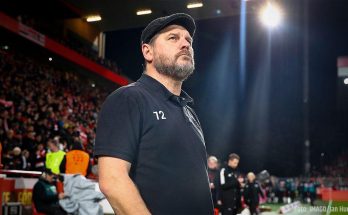In the shifting musical landscape where the line between pop and rock continues to blur, two artists have emerged not just as chart-toppers but as genuine innovators of emotional storytelling: Dan Reynolds (frontman of Imagine Dragons) and Tyler Joseph (lead of Twenty One Pilots). Their work offers a blueprint of how modern pop-rock can carry raw emotional truths and experimental spirit—far beyond the typical radio single. By exploring their creative processes, personal backgrounds, and the ways they’re redefining genre conventions, we can peer inside the minds of music’s biggest emotional storytellers.
From the start, Dan Reynolds has seemed, in his own words, to be writing songs for himself. He has–in interviews–called it “selfish” though not in an egoistic sense: “I’m trying to write something to give me peace in that moment.That internal motivation has allowed him to tap into universals—grief, doubt, faith, weakness—that resonate deeply with listeners. Growing up in Las Vegas in a large Mormon family, he experienced early and intense identity and belief questions, and those experiences have fed his songwriting.When Reynolds says “music saves lives,” he’s not using hyperbole: he has spoken of discovering the emotional catharsis in turning his struggles into lyrics and melodies
But Reynolds’ innovation isn’t just in sincerity. He and his band understand the mechanics of big-choruses and rock dynamics, and they bring those into the pop realm in a potent combination. When interviewed, he noted that many newer rock bands shy away from “a big song with a big chorus,” but that’s exactly what he grew up on—and what he wanted to write. This melding of arena rock sensibility with radio-friendly hooks is one of the ways he’s helped redefine pop-rock. On their album Loom, he described the thematic through-line as the human experience told from a self-reflective narrative view.And while many artists pivot to more electronic or minimal sounds, Reynolds still embraces the powerful “rock” aesthetic—but used for personal, vulnerable content rather than just bravado.
His willingness to expose emotional fracture is among his greatest gifts. On the song Demons he said: “I was very depressed when I wrote that song… I felt lost, like I had to rebuild from nothing because I had no faith in anything.” And when he writes about empowerment, it often comes from that “false bravado” stage—where the speaker has been weak, but now is speaking up. He acknowledges that the confidence we hear is in many cases a reaction to fear or pain underneath. That duality—vulnerability masked by strength—is central to his innovation.
Switching to Tyler Joseph, his approach strikes me as complementary but distinct. Whereas Reynolds places his personal self front and centre, Joseph prefers to write in solitude; he resists co-writing, saying emphatically: “You just can’t co-write a song with a story behind it that is as deep as some of the stories I’ve fallen in love with. … If this fails, it’s me. If it does well, it’s me. That insistence on individual storytelling gives his music a singular voice in a world of collaborative pop writers. It means the stakes are personal. The approach is not just to write a hit, but to document internal struggle, unique world-views, and ask big questions.
Joseph’s music often defies easy genre categorisation: rap, rock, pop, electronica, even spoken word all enter his sandbox. But beyond the sonic fusion, it is the narrative complexity that separates him. In the song Stressed Out, he addresses a character called “Blurryface” which embodies insecurity and self-hatred. He describes the persona as representing “all the things that I as an individual — but also everyone around me — am insecure about.” That conceptual layering—self becomes character becomes story—is part of his innovation in emotional storytelling. He builds mythos around his own internal world, while still keeping the lyrics relatable: doubt, fear, growing older, losing innocence.
What makes both these artists interesting is that they don’t fit neatly within a single lane—they borrow rock power, pop immediacy, and introspective lyricism traditionally associated with singer-songwriters. Reynolds speaks of his teenage self holding a saxophone too big for him in middle school, being the “worst time” of his life with braces, and writes songs like Thunder as a kind of message to a younger Dan: “If Dan in sixth grade could hear this song, it’ll work out and be okay.” Meanwhile Joseph’s studio is in his basement; he collaborates very little, preferring that his voice be unmediated. He isn’t jamming live tracks with a band in the room; he’s in isolation, composing his vision.
They are also both unafraid of the heavier themes: mental health, faith crises, doubt, identity, purpose. For Reynolds, even though he no longer identifies with his early religious upbringing, the imprint remains and the songs reflect the tension. For Joseph, he uses his music as a mirror to his own anxieties and writes not for perfection but for authenticity. That authenticity resonates with a generation raised on therapy talk, bare-exposure social media, and a search for meaning in a chaotic world.
It’s useful to think about how their storytelling contrasts with traditional pop-rock. Historically, pop-rock focused on love songs, anthems, and broad-brush emotion. Reynolds and Joseph take the micro-moment—the late-night worry, the self-questioning, the faith shaken—and place it within a major-scale sonic architecture: arena choruses, heavy hooks, rap verses, electronic textures, big drums. That sort of juxtaposition—personal interiority meets arena-sized production—is one of the keys to how they’re redefining the form.
Moreover, they both understand the power of narrative arcs in albums. Reynolds talks about how Loom is about change, about the inevitability of change and the tension between what stays and what shifts. Joseph’s albums too build recurrent characters, mythologies, and emotional journeys (for instance, his character “Blurryface”). This increases the depth and invites long-term engagement rather than just branch-out singles. Fans come for more than a catchy chorus—they come for meaning and for a voice that seems to articulate their inner chaos.
In practical production terms, both artists embrace genre cross-pollination. Reynolds spoke of how the single Eyes Closed from the album Loom fused rap, rock and pop and included a rhythm inspired by reggaeton artist J. Balvin. He said: “It could be cool and interesting, why don’t we try it?” Joseph’s band has dabbled in electronic breaks, rock instrumentation, hip-hop beats and more. Their sound cannot be pinned to one category; that fluidity allows emotional storytelling to reach unexpected sonic territories, which in turn helps the listener feel unsettled, reflective, moved.
Importantly, in both cases the emotional element is genuine. For Reynolds, therapy and personal healing are central to his songwriting: “Therapy helped me understand the weight I was carrying, but putting those feelings into music—that’s where I really found freedom.” And for Joseph, his inability to delegate songwriting is tied to honesty: the song either reflects him or it doesn’t. That self-interrogation creates a depth many pop songs lack.
Their personal lives feed the art. Reynolds has publicly discussed how depression, identity crisis, faith crisis, and parenthood have shaped him and his art.Joseph, while more private, embeds parental reflections, identity questions and youthful anxieties into his lyrics. His choice of writing in a basement studio may feel modest, but it aligns with a mindset of introspection rather than glam. The result is that fans feel like they are part of a conversation, not just consuming a polished product.
What are the implications for pop-rock’s future? First: sincerity will be rewarded. In a world where listeners often crave authenticity, artists who bring their actual selves—wounds, doubts, hopes—into their music will stand out. Reynolds and Joseph are examples of this: not polished veneers, but raw entry points into real emotional spaces. Second: genre boundaries will continue to erode. It’s no longer enough to be “rock” or “pop”—the meaningful songs in this moment are hybrid, borrowing freely from rap, electronic, rock, indie, whatever suits the emotional content. Third: narrative matters. Whether through character-driven albums, thematic arcs or solo writing practices, songs that link into a broader story or purpose have more enduring impact.
We must also note the risk. When an artist invests so much of self into songs, the emotional exposure can be exhausting. Reynolds has spoken openly about the dangers of being numb, of putting the band on hiatus to rediscover himself. Joseph’s DIY method may limit collaboration-driven innovation, but his singular voice is also his strength.
In the end, the work of Dan Reynolds and Tyler Joseph is redefining not just what pop-rock can sound like, but what it can mean. They’ve stretched the genre to include confessional writing, hybrid sonics, thematic depth, and emotional sincerity. Their songs may chart and have big hooks—but their real power is found in the places where they show the underbelly of fame, faith, identity and survival. For listeners around the world searching for music that feels both anthemic and intimate, that tension between the personal and the epic is what sets these innovators apart. As the next generation of artists looks to build their own voice, the example these men set is clear: write from the soul, refuse genre boxes, and invite your audience into your internal world.



